Towards the end of the Second World War, my father Johann Gruber, a German school teacher was hiding in Portugal. He was working under an assumed name along with a well-known spy named Joan Pujol Garcia translating German communication for the allies. During his years in Lisbon, he heard rumors of the survival and existence of some coins from the infamous Biblical thirty pieces of silver that Judas Iscariot allegedly received in exchange for the arrest of Jesus as is narrated in the Bible.
Though a little girl then, I would remember the rumor my father spoke of for many years and particularly the reference to a place called “Malabar” and “Goa” on the west coast of India. It was a favorite topic of conversation for some time for our devoted Catholic family.
Later in my 30s, trialing and trailing the “hippy” culture, I headed for Goa along with a boyfriend. Following a lead and a friend’s advice, I landed a few weeks later at Cannanore on the Malabar coast in Kerala. Through some contacts in the local catholic parishes, I visited a village in Kannur called Cherukunnu where I was shown four silver coins by an old lady named Parukutty.
Blood Silver (Rakta Velli)
She referred to the coins as “Rakta Velli” or blood silver. The story of the four coins so astounded me, that I found it too preposterous to believe and wondered whether I had chased a wild goose all these years. But more surprises were to unfold in the years to come. A brief mention is made by some websites following my revealing this story to Justine, my English translator. However, here is my story of the mysterious relics called the St. Thomas coins as never reported before.
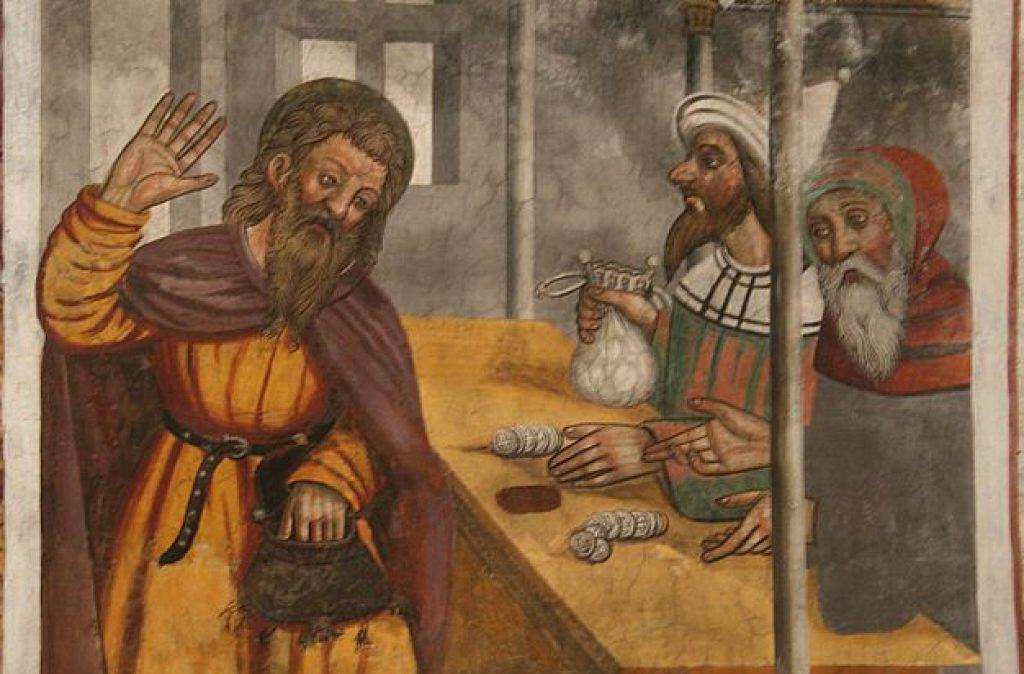
First Reported in 2005
I first reported this story in 2005 in Germany, after traveling to Kerala, India on three occasions. Since then, my friend Justine has posted a brief version of the story on some websites. It raised many controversies then and I have for many years been both threatened and harassed by many Hindus as well as Protestant church members from India. But the truth is the truth and I cannot change it. In fact, for the record, this is the full story of the events that led me into publishing the discovery of those four coins the Hindus call the “Rakta Velli”, narrated here in greater detail.
Parukutty Amma Shows St. Thomas Silver Coins
It was actually on my initial visit to India in 1972 that I first saw the four Rakta Velli pieces. I visited the Nair Taravad (ancestral home) at Cherukunnu in the Kannur district along with a mutual acquaintance, a nun from the nearby St. Martin de Porres Hospital who was also my interpreter. On that occasion, the story that Parukutty Amma, the old lady at the Nair Tharavad in Kerala told me, seemed ludicrous and farfetched. But the faulty perception was partially mine as I had never really believed the story that the apostle St. Thomas visited as far east as India or even that Christians actually existed in India as early as the first century AD.
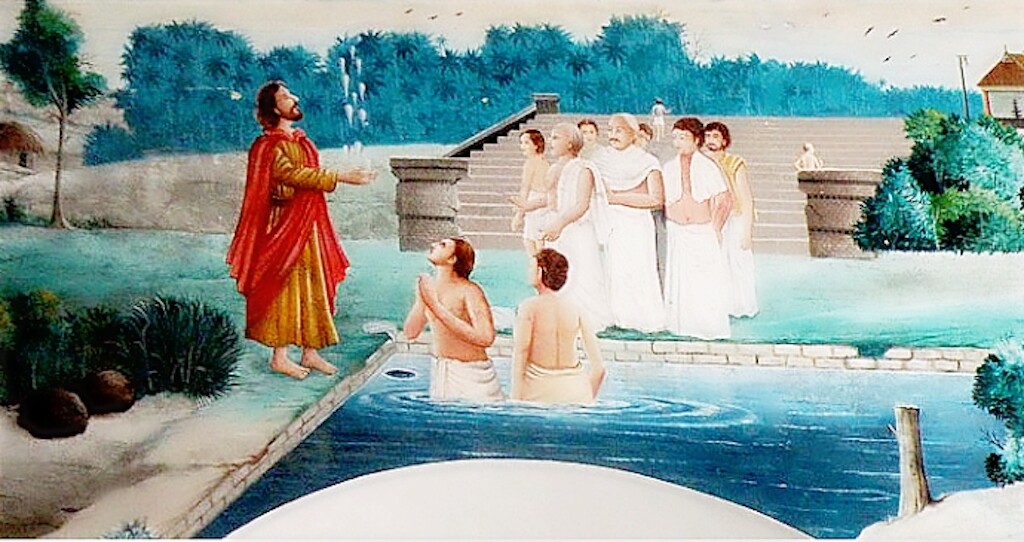
Thanks to my ignorance, at first it sounded nonsensical because I reasoned that neither the Romans nor for that matter any substantial community even within Judea had converted to Christianity as early as that. They would probably still be recovering from the shock of the crucifixion. To be told that a contemporary of Christ himself had established many churches in Kerala about 1,950 years ago was local yarn or legend.
As many Europeans still do, I believed the propagation and spread of Christianity in India was a result of the much more recent colonization of India by Europeans such as the English, French, Dutch and Portuguese despite the nun from the local mission hospital making several attempts to convince me that I was wrong. In fact, on that visit to Parukutty’s ancestral household, I had not even bothered to photograph, measure or weigh these venerable coins when they were shown to me.
Today I know for certain that they belong to the original thirty pieces of silver that betrayed Jesus. Whatever happened to the remaining 26? These are perhaps the most important ancient Christian relics to surface in recent times! And I had not even paid due attention to them! But by the year 1976, sitting in my room in Munich, I had begun to give more serious thought to what exactly I had been shown at Parukutty’s ancestral house four years ago.
Portuguese Attempts to Take the Coins
My curiosity reached a highpoint for I had just returned from Lisbon where I had the opportunity to go through a private collection of very old manuscripts dated between 1690 AD and 1860 AD, recovered or rescued from Daman and Goa, India, in 1961 by Manuel António Vassalo e Silva.
They contained details of several attempts by the Portuguese to acquire four silver coins, referred to variously asmoedas de prata santos, moedas de Tomas, relíquias de Tomas and moedas sangrentos supposedly in the possession of some Hindu family in Malabar. There were details of arrests made, interrogations carried out and even summary executions. It is also mentioned in a Padroado Real, indicating even the Pope of that time was aware of the existence of these coins. Now there was no doubt in my mind as to what the Portuguese were looking for. I longed to return to Kerala once again and visit Cherukunnu.
Return to India
Thus in the winter of 1976, I landed at Bombay, into a very different India from my last visit. It was as if some of Germany’s afflictions had followed me there. The whole country was in some sort of curfew and my passport and travel papers were being scrutinized more often and in greater detail. The police were present in most places. I remember being warned by well-wishers not to be critical of the government or be seen carrying more cash than a regular tourist. A large number of the country’s opposition, as well as press reporters and foreigners, were languishing in jails. The vibrant democracy I had known of that country seemed to have gone bananas!
Apollonius of Tyana Similarities to Jesus
However, I had no intention of abandoning my quest. In the very first week of that visit I had not only come to know the story of Saint Thomas and his martyrdom in India, near Madras but also that in the past, the various denominations of Christians in Kerala made attempts to acquire the four coins gifted by St. Thomas to preserve them in a church as relics. I was told by some old priests of a Catholic Church that Syrian Christians or Nasrani Christians made the most vociferous claims to the coins as early as the 1920s but the issue took a back seat during the Malabar riots of 1921 and the matter was subsequently forgotten.
According to my friend at the mission hospital, Malayalam’s writings of that time made several mentions of the St. Thomas coins. Nehru during his prime-ministership is believed to have received a petition from a priest of Kerala to do all that he could to “restore” the coins to the Nasrani church. Nehru apparently ignored the petition as his office issued no reply.
On my second visit in the winter of 1976, I found myself in a different scenario at Cherukunnu. The beautiful ancestral house with its kolum (pool), teak-wood pillars and central courtyard was lying in a huge heap of rubble. The heavy brass fittings on the doors were being ripped off the age-old timber to be sold away. The rubble was now being used to fill the black granite-lined kolum on the steps of which Parukutty and I had sat chatting not many years ago. Trucks arrived to carry the timber and age-old furniture away. I was aghast and remember shedding a few tears, much to the amusement of some family members and workers scattered around the compound. A foreigner is hardly ever seen in these parts and this time my friend, the nun from the mission hospital, could not accompany me either. I stood alone at the edge of the compound at the concrete gateway of the house the locals call a koni, having made it through the pathways in the paddy fields below and terrified at the thought of encountering a snake.
A smaller house of common contemporary architecture had been built nearby, through the doorway of which Parukutty emerged. She smiled despite looking much older than her seventy-odd years and very weary. She was obviously ailing and had only risen from her bed on hearing of my arrival. She offered me some prasadam from the Someswari Temple, a languishing ancient Hindu shrine located barely a minute’s walk away outside the Taravad compound.
Seeing Parukutty Again
I was then met by a nephew of Parukutty who was a government revenue officer of some seniority in the district collector’s office. He explained in slow and halting English how difficult it was today to maintain a manor house of that size “in this day and age”. And how and why everybody in the family was now living scattered elsewhere, mostly outside the state of Kerala prompting him to make the decision on behalf of the whole family to divide the large estate into plots for the heirs of the taravad if they ever chose to come back to the land. He also revealed that the taravad house they were now demolishing and which was at the foot of a gradually rising hill, was a rebuilt one, the original one having been removed to allow the railway line to pass through in the early 1900s.
I followed Parukutty into her new house, recently built on what was given to her as her share of the taravad land within the large compound. Over coffee, cakes and banana chips I broached my pet topic again with her. The joy and the enthusiasm of my earlier encounter with her were missing and it took some effort to keep her on the topic.
She complained about the power-cuts and the disinterest of most family members to visit the taravad even once in a few years which had resulted in the decision to demolish the taravad. She vaguely remembered the taravad in all its splendor when she was a little child. Of lawyers, judges, and soldiers in her family. Of temple elephants and palanquins, festivals and feasts; and especially of the family’s contribution to the nearby Annapoorneshwari Temple as well as the austerities endured during the country’s freedom struggle of 1947. She remembered as a child, learning the spinning of cotton on a charka from the elders as one of Mahatma Gandhi’s efforts at self-sustenance. “Today, our clothes come from Dubai” she laughed.
Photographs of the Christian Relic
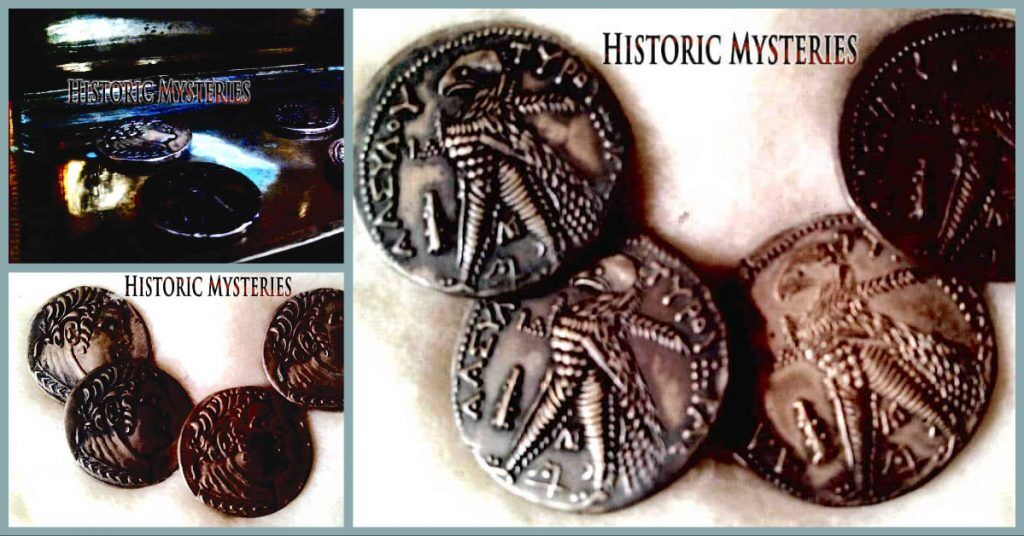
SOn my request, and when the table was cleared, the old lady produced the little box with the coins. My excitement this time was irrepressible. I washed my hands before handling them and took pictures of each as best as I could. Using a small weighing scale I carried for the purpose, I weighed each piece of silver. I even measured the approximate diameter of each coin. Satisfied that at last I had enough data, I returned the coins to the old lady.
She then began to narrate three or four instances when the nun from the mission hospital brought Christian patients with acute and chronic ailments furtively to the taravad to pray before the coins, placing their hands over the little box that contained them. The nun claimed the patients experienced quick and complete recovery from their afflictions. I listened to the familiar miracle stories related to Christian relics the world over, wondering what to make of it.
Request to not Report St. Thomas’ Silver Coins
All went well up to that point in time. However, from that moment onwards, other relatives who had been curiously listening to our conversation began addressing Parukutty in Malayalam, after which the mood in the room turned altogether somber.
Parukutty suddenly pleaded with me not to write or publish an article regarding the coins as the country was under martial law of some kind. She tried to explain to me that any controversy related to the coins in the newspapers may be met with unwarranted police inquiry, something her relatives feared. Though I couldn’t see any crime committed or law broken by the mere possession of some family heirloom, I promised her I would publish nothing.
As I was returning to Bombay, I also remember that year the newspapers in Kerala was agog with news of some human rights issue surrounding police brutality referred to as the “Rajan case”. Perhaps there was this unreasonable and morbid fear of what the police might be capable of in the psyche of a Malayalee in those days.
I remember Parukutty’s last words to me:
[blockquote align=”none” author=”Parukutty Amma”]“India is more secular, tolerant and careless today, Paula-mole’. The communist government in Kerala doesn’t care for relics. You have witnessed that my very family doesn’t care for their own taravad. The bright lights of Dubai and Saudi are today’s reality. Everyone wants to go there. New television sets, cars, and electronic goods are the only kind of attraction. Thondachan’s shrine lies dilapidated somewhere in the paddy fields. We have stopped contributing to the annual puja years ago as though it was some superstitious belief of the lower caste. Since the demolition started hundreds of valuable antiques from the taravad have been sold for a song. The day is not far when these coins will also be forgotten when I am gone, mole’.” [/blockquote]
Her speech was often interspersed with mole’, an endearing local expression to mean “little one” or “daughter”.
Ya’akov Meshorer
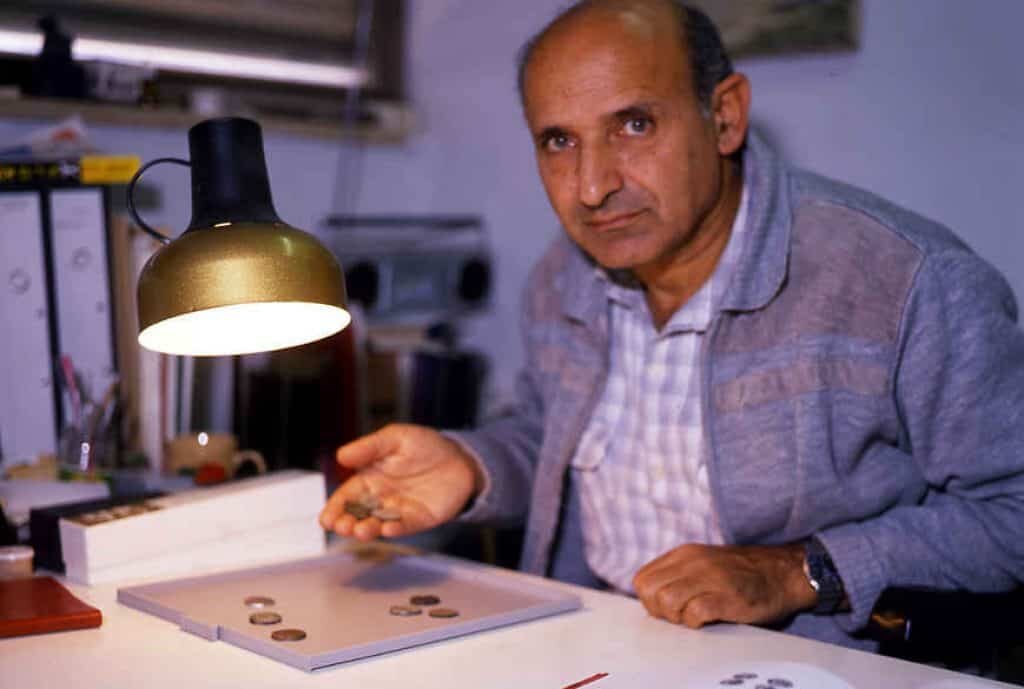
Quite some years would pass before I traveled to Israel in the mid 1990s and was introduced to an expert in middle-eastern, especially Biblical numismatics. His name was Ya’akov Meshorer, an acclaimed scholar in the field. He examined the enlarged photographs of the four Rakta Velli pieces closely along with the weights and diameters I had recorded.
[blockquote align=”none” author=”Ya’akov Meshorer”]“Interesting! Remarkably well preserved!” Meshorer remarked. “The lack of adequate patina for a set of coins as ancient as these would have bothered me. But considering they remained uncirculated and did not change hands could be partly the reason for their mint condition. But these four coins fall in the category of what I call ‘Jerusalem fakes’.”[/blockquote]
“Meaning they are not the real thing?” I inquired. To which Meshorer explained:
[blockquote align=”none” author=”Ya’akov Meshorer”]“I do not wish to comment on whether these four coins belong to the thirty pieces mentioned in the Judas story as told in the New Testament. But my belief is that it was most likely a Shekel of Tyre that Jesus and Peter paid as the Temple Tax. Half Shekel each as mentioned in Matthew 17:27, and therefore it is possible that the same Shekels of Tyre were the coins that the priests of the temple paid to Judas as mentioned in Matthew 26:15. There were two kinds of Shekels from Tyre in use in Judea at that time. One that had the alphabets KP inscribed on them belonging to the era 18 BCE – 66 CE and one without. When Tyre discontinued minting these coins in 19 BCE, and Jewish authorities continued minting them in Jerusalem because they were the only coins acceptable for tax payments, perhaps due to the higher percentage of Tyrian silver in these coins. The artistic style deteriorated however with every new lot minted over the decades, but their overall look as a and their weight in terms of the silver content was enough to pass them off as Shekels of Tyre. These temple fakes are many, varying greatly in design accuracy as various casts and molds were used by the priests over time. Many perhaps remain to be discovered yet. Your four coins belong to this category. It may well have been thirty of these Jerusalem fakes that Judas received from the priests. The four coins you have here definitely belong to a category of the Shekels of Tyre that existed in the time of Jesus.”[/blockquote]
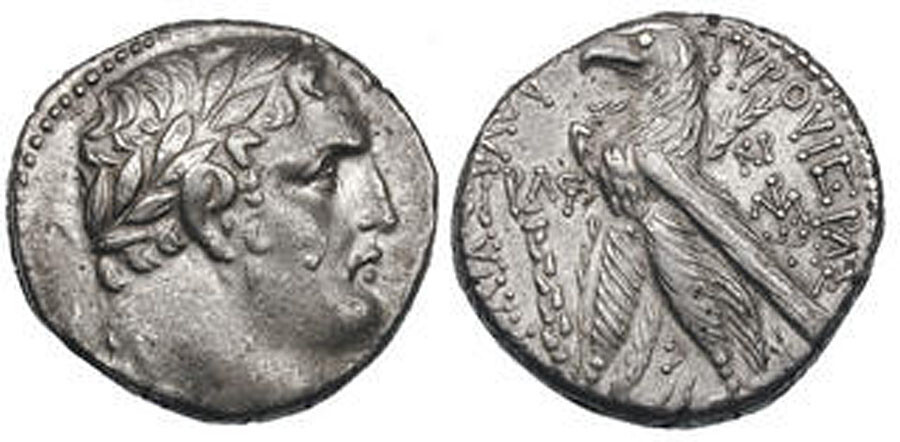
That information from a scholar of eminence was enough for me. I knew for certain the coins were true relics from St. Thomas. It was anyway inconceivable to me that a semi-literate old Hindu woman would make up such a fantastic story. The old Portuguese records in themselves were quite convincing to the extent that the Portuguese inquisitors had definite intelligence and information that the coins had survived till the 16th and 17th century, and were in the possession of the Kambian Valappil Nair family. The only question that now remained unanswered in my mind was how St. Thomas came into possession of the thirty Shekels of Tyre that was a matter of secret transaction between the temple priests and Judas.
Gospel of Judas
As if by an act of destiny, translations of a text called the Gospel of Judas discovered in Egypt began emerging from 2001 and was even published in early 2006 by the National Geographic Society. The Gospel of Judas is a Gnostic gospel whose content consists of conversations between Judas Iscariot and Jesus. In contrast to the canonical gospels which paint Judas as a betrayer of Christ who delivered him up to the authorities for crucifixion in exchange for money, the Gospel of Judas portrays Judas’s actions as done in obedience to instructions given by Christ.
Even in the canonical gospels, there is evidence to believe Jesus knew exactly who would betray him, when and how it will be done, etc.. Obviously there was more to the events of 2000 years ago than was recorded by Mark, Mathew, Luke, and John. Of the hundreds of gospels written in the centuries following Christ, only four have been declared “acceptable” or Canonical. There is also a long list of “lost gospels” – which have been well known to have existed and written earlier than the canonical gospels, perhaps immediately after the crucifixion, but which disappeared or have been destroyed at various times in history on the whims of some monarchs, non-Christians or the Catholic Church itself. I am certain the truth will finally emerge on how these thirty pieces of silver came into Jesus’ and St. Thomas’s possession.
Today, I am nearing eighty years old and quite feeble myself. My last visit to India was in 2004, staying long enough to see the Taj Mahal and visit Rajasthan. I returned to Germany in 2005. It was another India all over again for me. Cars of every description plied the roads. The roads themselves were lined with malls, supermarkets, and stores selling exclusive international brands. People looked wealthy and fashionable. Consumerism was certainly at a high.
It was mid-October when I landed in Bangalore, this time having decided to take the road to reach Kerala. There was some excitement on the highway when news broke that some famous bandit had been killed by the police. I remember wondering what a strange country I was in. I had just left behind a city whose streets were lined with blue-chip corporates and malls with bowling alleys and fine-dine restaurants. In a matter of less than a couple of hours, I was on a highway where a man who lived his life as a forest brigand and elephant poacher had just been killed.
My dear Parukutty amma was long dead and the compound in which the taravad stood was overgrown with weeds. Some new houses in the vicinity were perhaps owned by her relatives but it appeared pointless trying to communicate with them. My friend, the nun at the mission hospital, had also been transferred elsewhere. I had come alone and left Cherukunnu in a matter of hours without meeting anyone except some hospital staff who barely knew me.
I felt free to now talk about the coins, perhaps even write about it. This is what I did when I returned to Munich. Justin, a contact in India later wrote to me to tell me that the story was circulated among Indian Christians but most seemed unsure about its authenticity. Very few even felt the need to investigate anything more into the matter.
Parukutty was right. Nobody quite cared. Instead, a few months later a relative of Parukutty called me on my mobile phone all the way through to Munich, in a rather foul mood wanting an explanation as to why I had broken my promise. I told him that it was time the world got to know about a very important relic lying in obscure hands. And that anyway the person to whom I had made the promise was long dead. Apart from that, I had published the article only in Germany. I felt I had done my bit for God and man. The caller began to use abusive language.
I listened to some of his offensive expletives and decided I had had enough of this exploit in my life. I am aging too and not in good health lately. I have delved into this story long enough. I have failed to understand the irrational fear of publicity some members of this family have. Apart from the fact that this event in the Bible, particularly that of the exchange of these silver pieces between Judas and the temple priests was the pivotal episode for the very start of Christianity, these relics also prove that the apostle St. Thomas had indeed visited India. The coins may never be revealed to anyone for another generation by this Hindu family. But I, once and for all desired to set the record straight and let the matter rest for good in my life. Thus, this is my story in all its necessary detail.